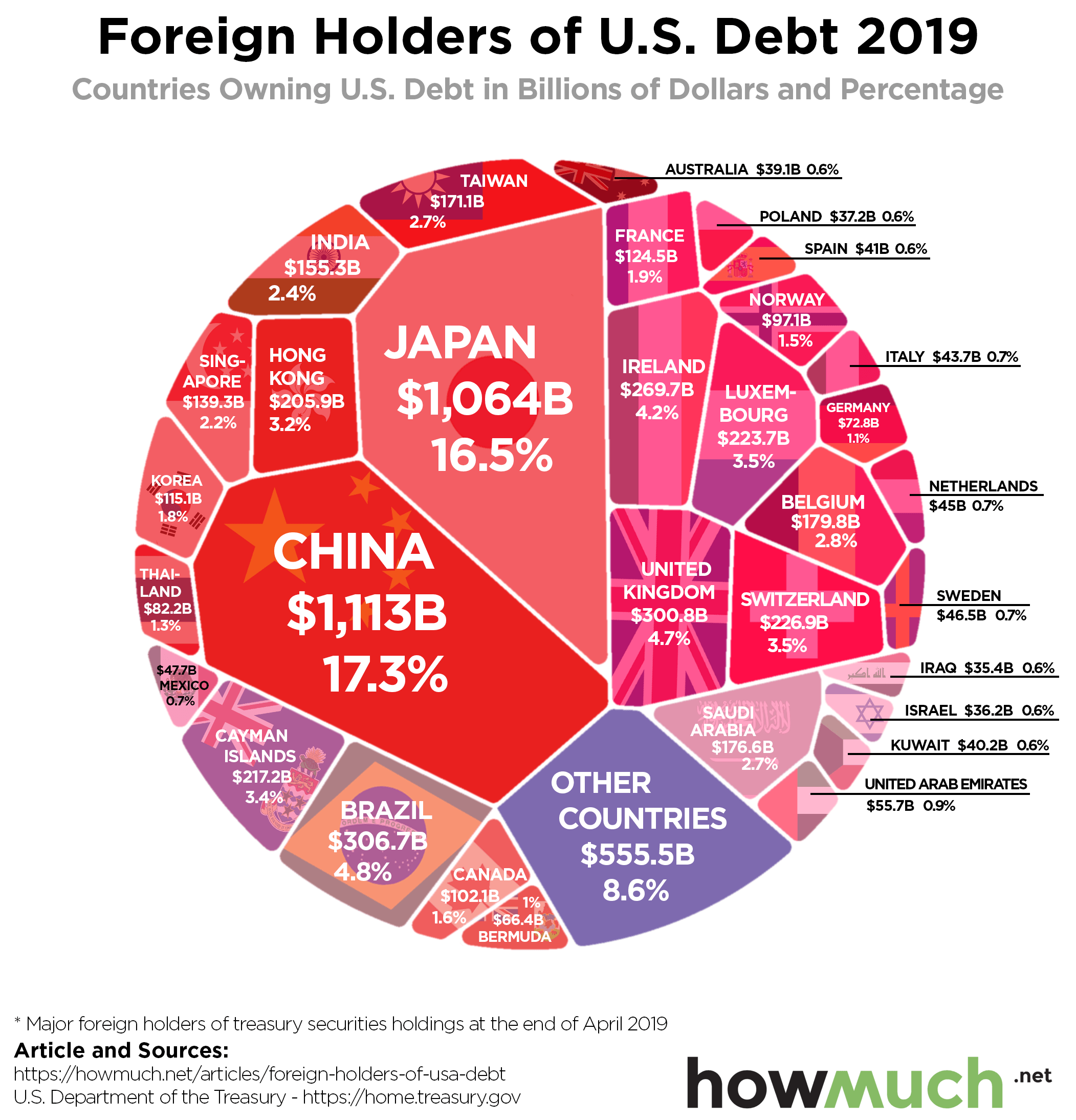In 2019, the U.S. national debt reached a new milestone of $22 trillion. Taking on debt enables the government to increase its spending on various domestic programs or make up shortfalls from tax revenue. One of the main ways the U.S. government borrows money is by issuing treasury securities, which represent an “IOU” from the government to the investor. While some of those securities are held by government agencies and the public, many are also held by foreign countries. Our latest visualization takes a look at which foreign countries hold the most treasury securities, and therefore own the most U.S. debt.
- The total amount of treasury securities issued to foreign countries is $6.433 trillion.
- China currently holds the most U.S. debt due to a variety of factors, including China’s desire to keep the yuan weak compared to the dollar.
- Most of the treasury securities held by other countries are in the form of treasury notes and bonds, rather than treasury bills.
- The top five countries in the visualization (China, Japan, Brazil, United Kingdom, and Ireland) account for almost half of the treasury securities held by foreign countries.
The information in the visualization comes from the Treasury Department’s database for Major Foreign Holders of Treasury Securities, as of April 2019. Each country that holds U.S. debt is represented as a proportional share of the circle. The two numbers listed underneath each country’s name indicate the monetary value of the U.S. treasury securities held by that country and the percentage of U.S. debt held compared to all foreign countries.
Top 10 Foreign Holders of U.S. Debt
1. China - $1,113 billion
2. Japan - $1, 064 billion
3. Brazil - $306.7 billion
4. United Kingdom - $300.8 billion
5. Ireland - $269.7 billion
6. Switzerland - $226.9 billion
7. Luxembourg - $223.7 billion
8. Cayman Islands - $217.2 billion
9. Hong Kong - $205.9 billion
10. Belgium - $179.8 billion
Two of the main types of treasury securities are also known as treasury bills and treasury bonds. A treasury bill (T-Bill) is a security purchased at a discount (such as paying $900 for a $1,000 bill), which is redeemed for the face value upon maturity. T-bills typically mature in one year or less. By contrast, a treasury bond (T-bond) matures after 10 years or more, and makes semiannual interest payments to bondholders. While returns for both of these are generally low, they are considered “risk-free” investments since they have the full backing of the U.S. government.
If tax cuts and federal spending boosts are approved, more treasury securities could be issued and the U.S. national debt could increase even more. Recently, the government has also been paying lower interest rates for some treasury securities, which means bond prices have been rising. Some possible reasons include the trade war with China, tensions with Iran, and a global economic slowdown. Despite the rising national debt and economic concerns, the U.S. still has a lower debt-to-GDP ratio than many other countries. You can learn more about that visualization here.
How do you think foreign investment in U.S. treasury securities will change over time? Please let us know in the comments.
Data: Table 1.1
About the article
Authors
Irena - Editor





